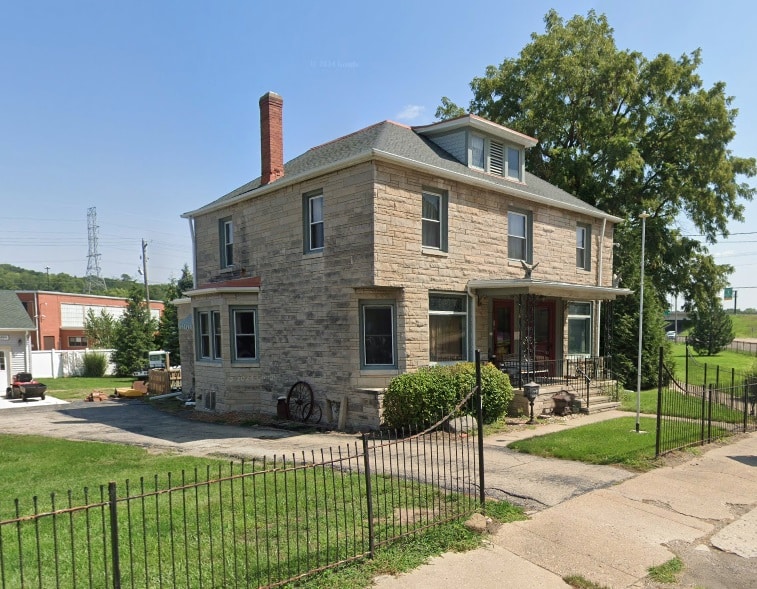This is a reprint of a “From the Local History Room” column that first appeared in December 2014 before the launch of this weblog, republished here as a part of our Illinois Bicentennial Series on early Illinois history.
When much of Illinois was still a wilderness, what did Tazewell County’s pioneers do for money?
In their first years after arrival, the pioneer settlers didn’t use money, but instead relied on barter. Before long, however, they were able to make use of the rudimentary makings of a monetary and banking system. In his 1905 “History of Tazewell County,” pages 870-872, Ben C. Allensworth provides an account of the development of the county’s financial system (which tracked closely with the development of the state’s and the nation’s financial system).
“In the early days of the settlement of Tazewell County,” Allensworth writes, “its merchants exercised the functions of banks by safe-keeping the money of the people and selling them bills of exchange . . . The old safes of those days, with their impressive size, showing great round rivet heads indicating immense strength, called ‘Salamanders,’ remain only a memory of the older citizens of today.”
Allensworth then cites Charles C. Chapman’s 1879 “History of Tazewell County” for his information on the county’s first bank, the Shawneetown Bank, founded in Pekin in 1839 as a branch of the Bank of Illinois. Col. C. Oakley was the bank president, Charles A. Wilcox was the cashier and William C. Docker was the clerk. The Shawneetown Bank “had but a short run and closed its doors in 1842, because of the collapse of the great improvement system, inaugurated about this time by the State of Illinois,” Allensworth says.

Allensworth’s account continues, “The first firm to do a regular banking business in Pekin, which has been handed down from one organization to another to this day, was that of G. H. Rupert & Co., established in 1852, although Mr. James Haines, a member of this firm, had opened an office for banking the year before as a branch of a Peoria bank.”
As we have noted previously in this column, the mansion of Gideon H. Rupert (1799-1877), which he built in 1862, was for a long time the location of Henderson Funeral Home, while James Haines (1822-1909) was a younger brother of William Haines, one of the co-founders and original plat-holders of Pekin. “It is from Mr. Haines we get the most information as to the methods and practices of the first bankers of Tazewell County,” Allensworth says.
The remainder of Allensworth’s account of the circumstances that led to the establishment of the banking firm of G. H. Rupert & Co. is here excerpted:
“We had no regular banks of issue in Tazewell County until the National banks were organized. Some of our older citizens remember that there was current money issued by a bank called the ‘Prairie State Bank of Washington,’ some time before the War, but the writer has been unable to get reliable information as to this.
“There was reported an incident as occurred at the counter of this bank at this time, which was characteristic of those days. A certain Doctor came to the bank and is said to have deposited $200 in gold. A short time after he wished to withdraw his money, when he was offered the paper issue of the bank for his demand, which he refused to take, demanding gold instead.
“It is said, the doctor, to end the altercation, drew his pistol and compelled the payment of gold . . . .
“Banks of issue of other States, and of cities of our own State, flooded the country with currency of doubtful value. This currency was mostly based on State bonds, and the less valuable these securities were the more profitable it was to circulate the currency based on them.
“Southern and Eastern banking associations would send their currency into the West for circulation, as far away from home as possible, that it might not be returned for redemption so easily. . . .
“This currency of ante-bellum days, based on securities of fluctuating value, was more or less discredited in different parts of the country, often depending on the distance it was from its place of redemption, but more frequently because of the changes of the market value of the State bonds on which these issues were based. . . .
“But the people grew tired of these constant changes in the value of their money and refused to use it longer. The currency became so obnoxious to the people that they came to designate it by such names as Wild Cat, Red Dog and still more opprobrious titles.
“It was at this time that the banking firm of G. H. Rupert & Co. did the people of Pekin and vicinity a great service. All our currency had become more or less discredited, and yet the people must have money to facilitate their transactions in business. G. H. Rupert & Co. adopted as their own issue the currency of the Platte Valley Bank of Nebraska, guaranteed on each bill put out by them, and thus relieved the stress for a good currency in Tazewell and surrounding counties.
“This was a very courageous act, and the approach of the Civil War, with its resultant crashes in all business enterprises, tested to the breaking point the credit of this banking firm.
“But, notwithstanding the terribly adverse conditions, they made good their guarantee to the people, redeeming in gold, dollar for dollar, this Platte Valley currency, thereby establishing a precedent of good faith which, up to this time, has been faithfully followed by all the banks of Tazewell County.”












